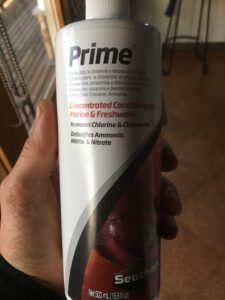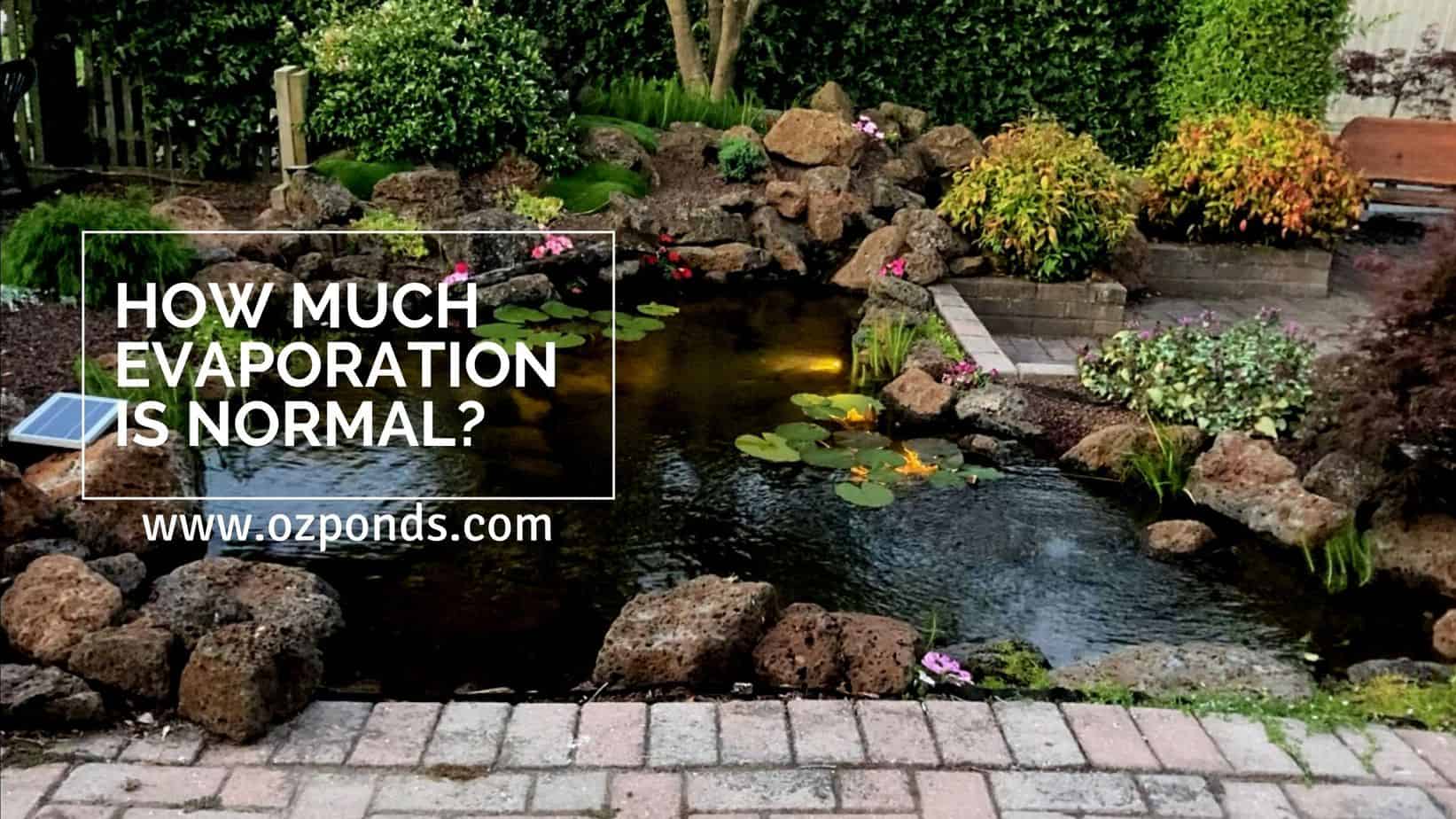At some stage over summer almost every pond owner is going to be convinced they have a leak. 99% of the time its not a leak at all! Just natural evaporation.
So before you get yourself into a full blown panic lets take a look at how much water a pond will lose naturally through evaporation.
How much evaporation is normal in a pond?
As a quick guide here is a table that shows how much evaporation is expected in a pond for varying temperatures.
| Temperature | Drop in pond level daily | Drop in pond level weekly |
| 20-25C (68-77F) | 0.5- 1cm (0.2-0.4 inches) | 2.5- 5cm (1-2 inches) |
| 26-30C (78.8-86F) | 1.5- 2cm (0.6-0.8 inches) | 7.5-10cm (3-4 inches) |
| 31C+ (87.8F+) | 2.5- 5cm (1- 2 inches) | 15- 30cm(6-12 inches) |
This guide is based on an average 3 x 4m (10 x 13 foot) pond. Keep in mind it is quite acceptable to fall outside these ranges.
Small ponds will drop water quicker than larger ponds. It’s not so much that more water is being evaporated its just that its more noticeable.
There are many factors that will influence how much water is lost due to evaporation.
What has the most effect on evaporation in a pond?
Temperature and wind are going to be the two major environmental factors that influence evaporation. Hot and blustery conditions will cause rapid water losses due to evaporation.
If we are talking temperatures over 31C (87.8F) you can easily expect to see 2.5- 5cm (1-2 inches) of water disappear daily.
Hot and humid days aren’t really a problem as there is lots of moisture in the air. Humid days are also generally quite still, so wind isn’t a problem.
Also on humid summer days quite often mean a storm is on its way so any small evaporation losses will quickly be replenished.
Prolonged periods of dryness so even if the temperatures aren’t extreme you will still notice substantial losses over the course of a week.
Water movement is really important for a healthy pond. Waterfalls and streams help oxygenate the water. As the water ripples up and down on the rocks or even bare liner it creates a wicking or drying effect.
A good bench mark to follow for how much the movement of water has on a pond evaporation is 1% of pump volume.
For example a 4000 litre (1050gal)/ hr pump will cause around 40 litres (10.5 gal) of water loss per day.
Surrounding plant roots entering the pond. This is very common and will lead to very noticeable water losses.
Topping up pond water due to evaporation
So can you just top the pond up with your garden hose?
Well I do. Previously every time I added water from the tap I would use a de-chlorinator.
Now my rule is – “If I’m not adding more than 20% of the pond volume I just add the tap water direct to the pond.”
Chlorine dissipates quite quickly. Chloramine on the other hand takes much longer to break down.
Because my local water supply uses chlorine-based chemicals to clean the water I feel quite safe. I should add I’ve been doing this for 3 years now without incident to the fish health.
If my water supplier was using chloramine I think I might use a de-chlorinator. Chloramine seems to take 25 days to break down.
When adding water so frequently during summer that would worry me.
Prime (eBay link) is a decent de-chlorinator that will remove both chlorine and chloramine. It also bind the ammonia, which is a by-product of the breaking down of chloramine.

Things that you can do to reduce pond evaporation
Providing shade will help with evaporation caused by the sun directly it will not stop evaporation that is caused by wind and water movement.
There is a number of ways that you can provide shade. It could be the addition of a small shade sail, planting shade trees around the pond, even just utilising water plants like water lily’s to cover the 1/3- 1/2 the ponds surface will help.
Planting wind breaks or using berms. Anything you can do to shelter the pond from wind will help with evaporation.
When digging the pond some of the excess soil can be used to mound up areas where the wind predominantly comes from.
Also adding screening plants will help reduce the impact of the wind. A wall of greenery also looks great.
Rain water harvesting is a great way to make the most out of rain events. Often the rain that falls directly into the pond isn’t a significant amount.
By utilising the water that falls on the roof of your house and sheds will greatly improve the amount of water captured by each rain event.
You can simply rain a down pipe into the pond or even better connect a water tank and an auto top up valve.
This will allow water to be toped off as needed.
Reduce water movement this should be a last resort. Water movement is critical for optimal water healthy and clarity.
However if you have a big waterfall that is for there for looks and not part of the bio filter it could be slowed or shut down during times where no one is looking at the pond.
Using variable speed pumps (eBay link) or timers (eBay link) will make this really easy.
This is one reason I love bog filters. They require very little flow to be super effective. If you want to learn more about bog filters, click the link- you’ll find plenty of resources on this website.
Subscribe
Hopefully this article has been helpful.
I often receive special offers and discounts from pond suppliers and distributors. These special offers I share with my readers.
If you would like to receive these special offers and discounts make sure you subscribe to the mailing list, so I can deliver them direct to your inbox.

